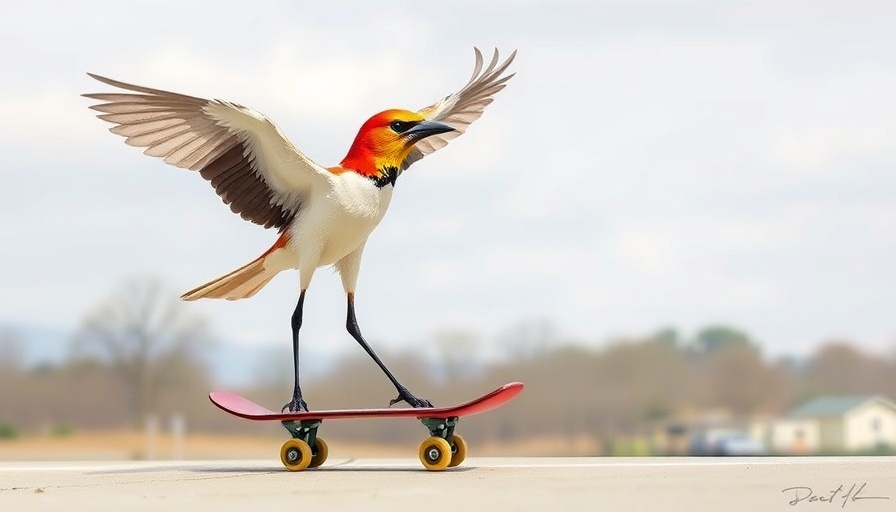
Who is the Skatebirder? Meet Dave Mull
In the dynamic world of skateboarding, one professional skateboarder, Dave Mull, has found a unique identity as a skatebirder. This term perfectly captures his passion for both skateboarding and birdwatching, merging two seemingly unrelated hobbies into a lifestyle defined by curiosity and connection with nature. Mull takes his binoculars everywhere he goes, enabling him to stay attuned to his surroundings while performing tricks on his skateboard.
Bridging Two Worlds: Skateboarding and Birdwatching
For Dave, the act of birdwatching isn't just a distraction; it serves as inspiration while he skates. He reveals, "When I'm skating, I actually gain inspiration from my surroundings... the birds are flitting from one tree to the next like it's nothing.” This statement highlights a broader perspective: nature can enhance our abilities in various aspects of life. His unique approach resonates with many, as it speaks to finding joy and beauty in unexpected places.
Changing Perceptions: How Birding Captures Attention
Despite the unusual blend of his interests, Dave's practice of birding during performances often surprises onlookers. He explains, "If I'm skateboarding and then I pull out my binoculars... some people see that and they’re like, just totally taken aback.” Many visitors initially laugh, but their reactions quickly turn into fascination as Dave shares moments with the birds—turning skeptics into curious enthusiasts. This engagement builds a community around shared experiences, promoting a larger appreciation for nature.
Embracing Nature Through Unconventional Lenses
Dave Mull's journey illustrates how personal passions can intersect and the importance of embracing hobbies that nurture one's spirit. By integrating birdwatching into his skateboarding lifestyle, he not only enriches his own experiences, but encourages others to view the world through a different lens. As we navigate our busy lives, perhaps we could all benefit from taking a moment to pause, observe, and draw inspiration from the natural beauty around us.
 Add Row
Add Row  Add
Add 




Write A Comment